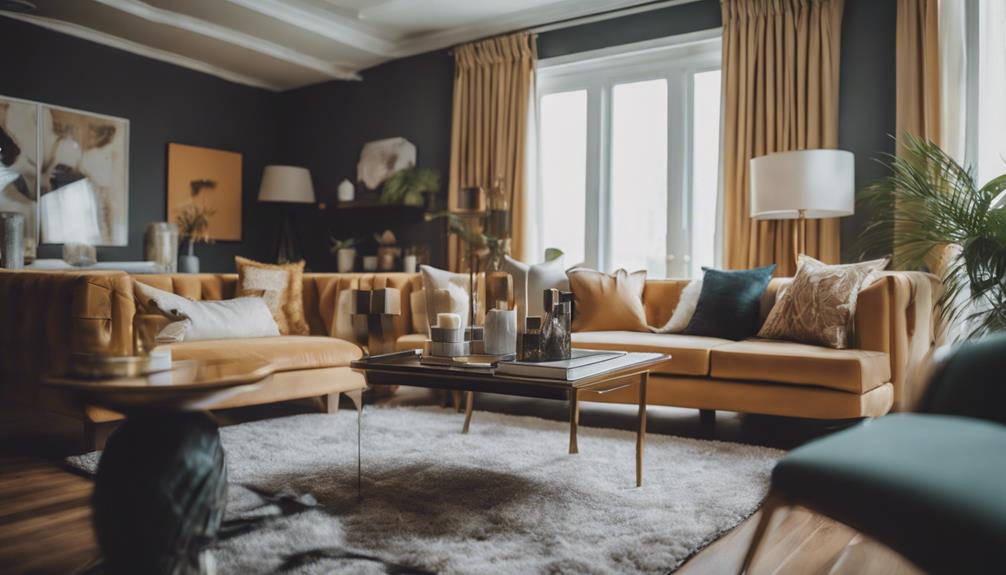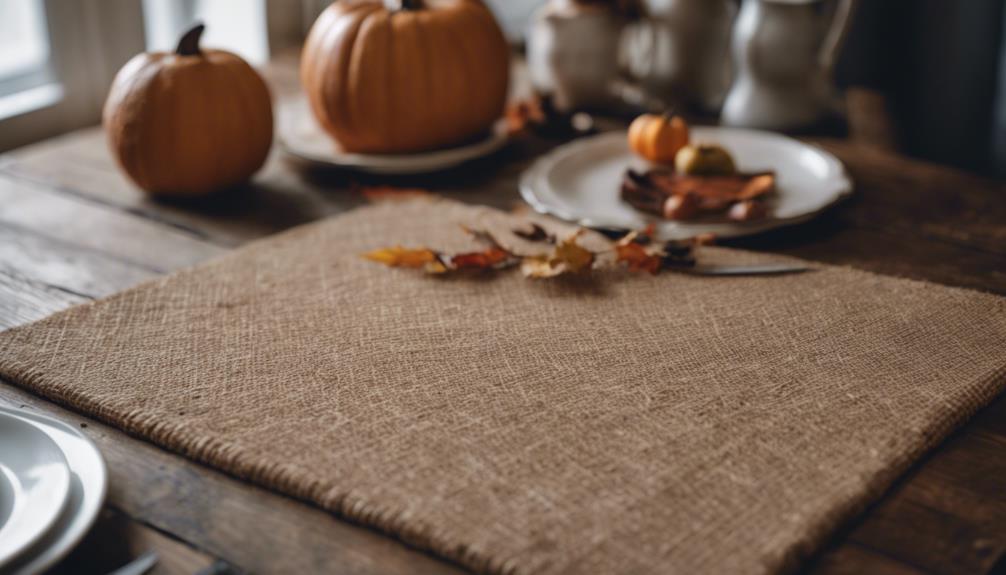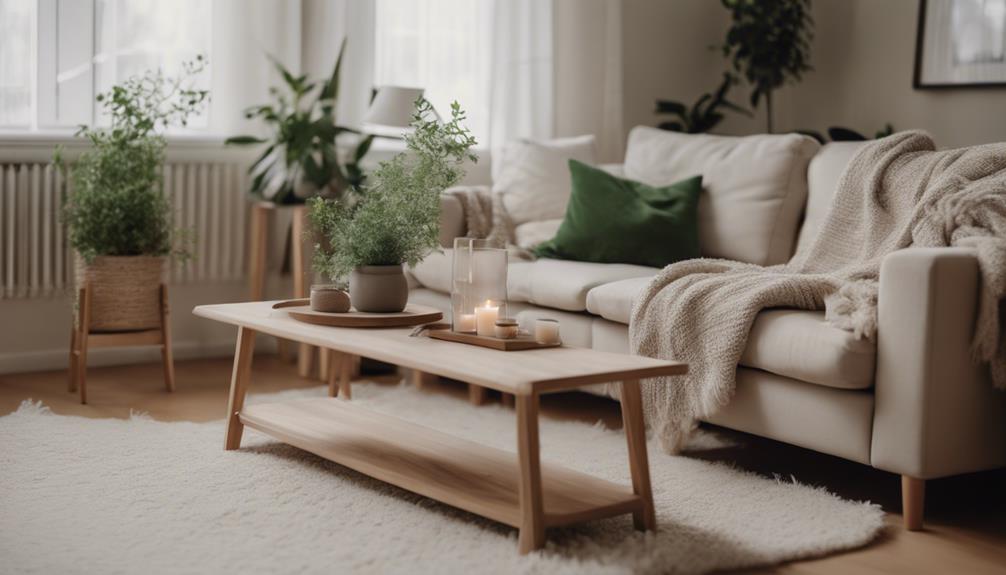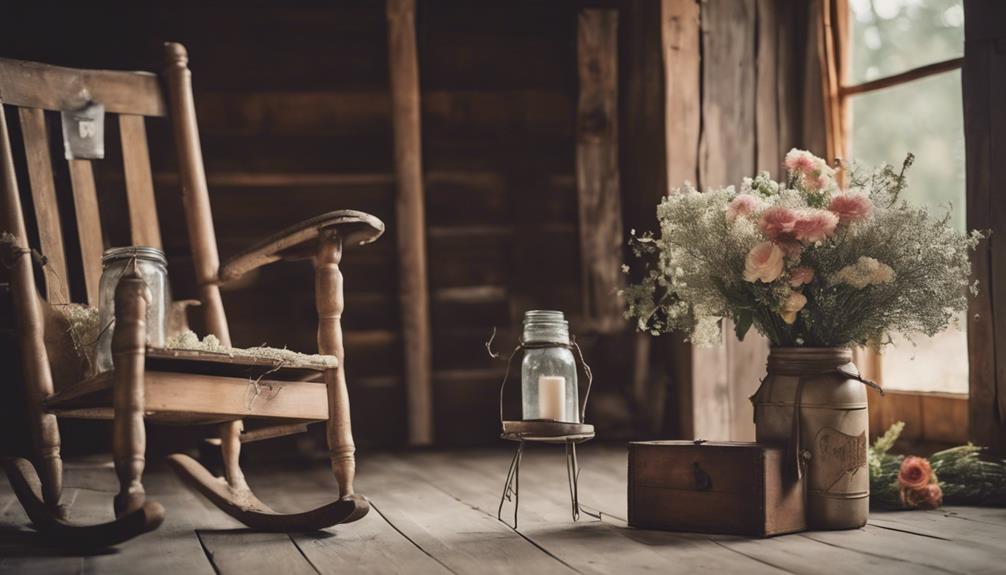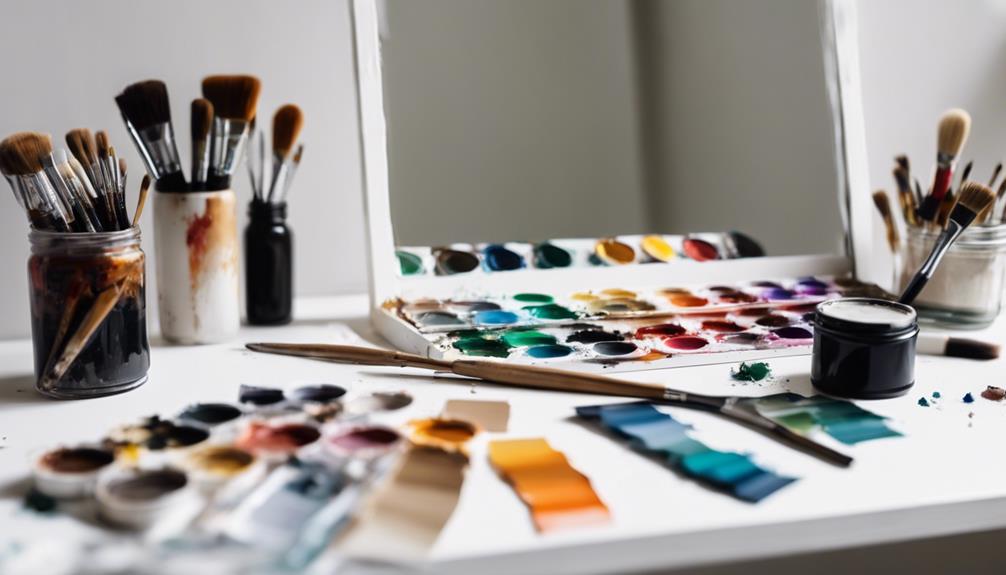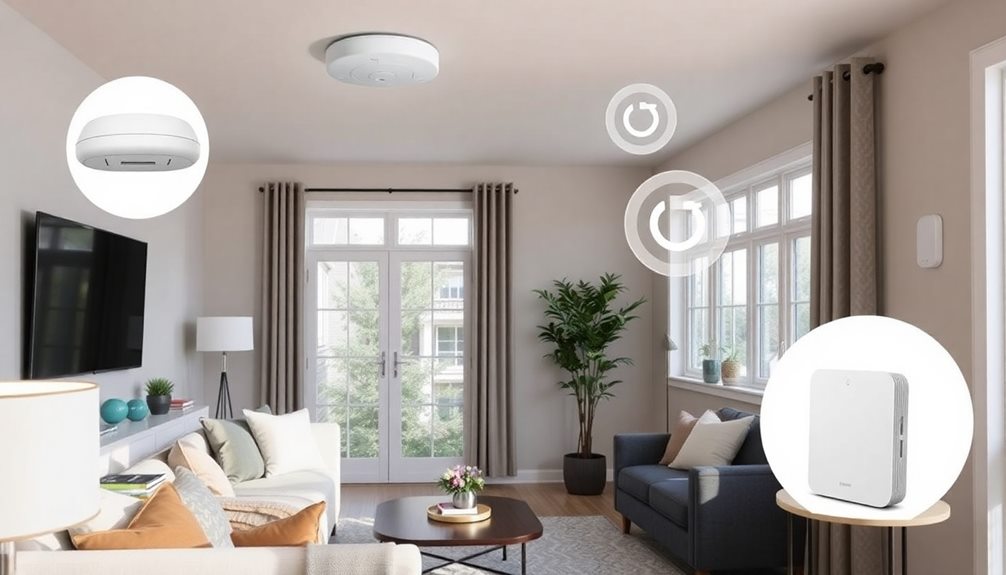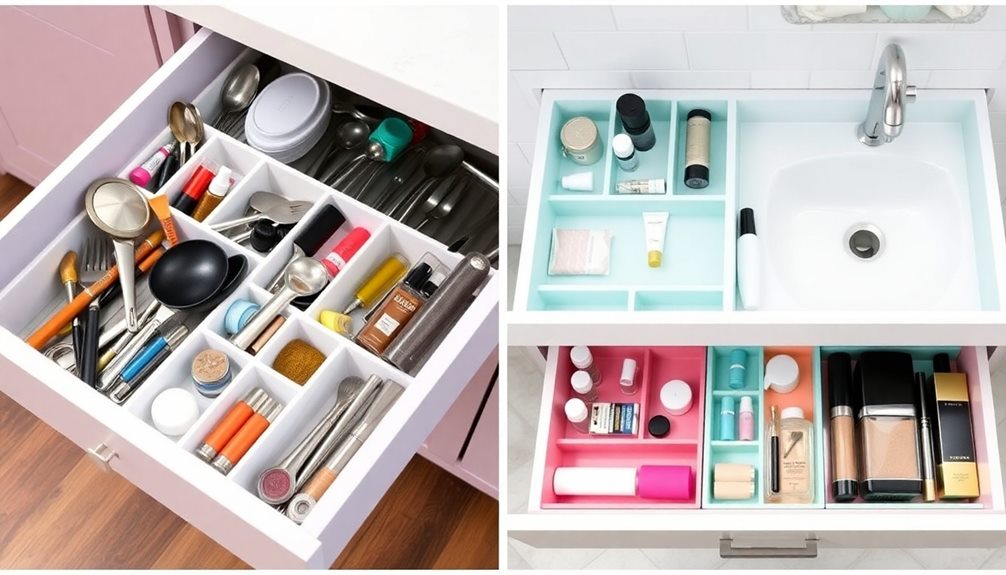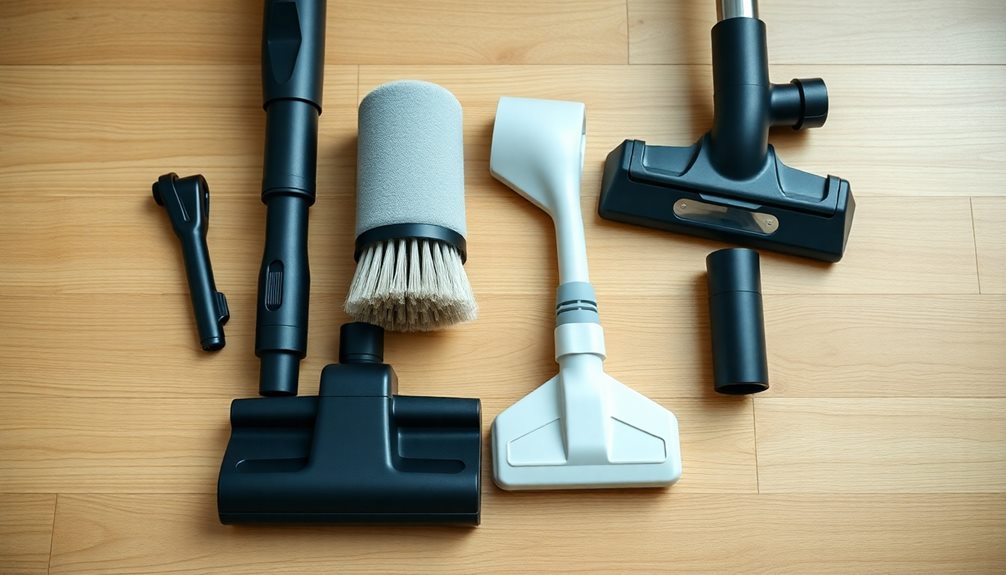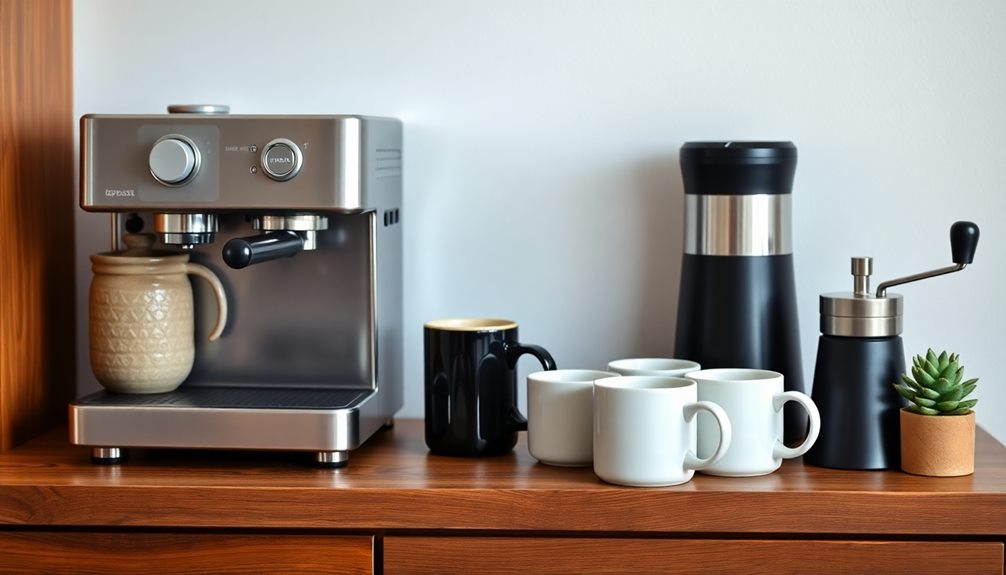Interior decorating courses provide in-depth training on design elements, materials, lighting, and accessories, equipping individuals with skills for a successful career. You'll learn to draw floor plans, explore design styles, and even gain certification. These cost-effective courses cover color theory, industry trends, and practical projects, bridging theory with hands-on experience. Whether focusing on residential or commercial design, no prior experience is needed to start learning. The benefits extend to personal or professional growth, offering valuable skills and a certificate upon completion. Discover more details about the curriculum, design principles, and industry trends to enhance your expertise further.
Key Takeaways
- Interior decorating courses teach design elements and color theory.
- They cover materials, lighting, and spatial arrangements for functional spaces.
- Courses offer hands-on projects for practical experience and skill development.
- No prerequisites needed; suitable for beginners interested in interior design.
- Completion leads to certification, paving the way for a successful career in interior decorating.
Importance of Interior Decorating Courses
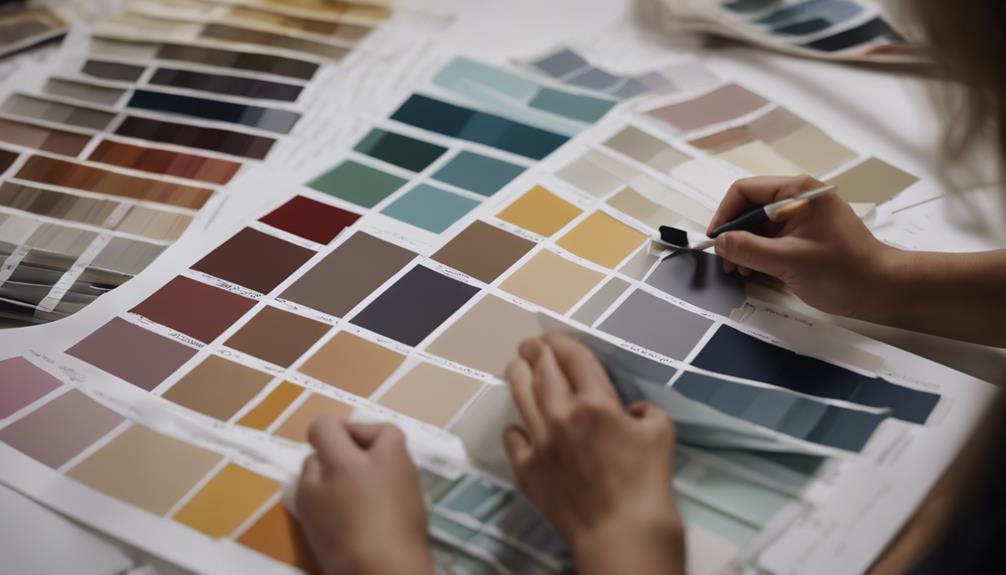
Interior decorating courses play an essential role in equipping individuals with the necessary skills and knowledge to excel in the field of interior design. These courses provide thorough training on elements and principles of decorating, design materials, lighting, window treatments, and accessories. By enrolling in interior decorating courses, individuals can learn to draw professional floor plans, consider specialized room design, and explore basic design styles.
Moreover, interior decorating courses offer a pathway to certification, providing the skills and knowledge needed for creating beautiful homes and pursuing a successful career in interior decorating. This certification is valuable as it demonstrates competence and expertise in the field. Additionally, the cost-effectiveness of these certification courses, with online programs typically ranging from $800 to $1500, makes them accessible compared to traditional university programs. This affordability allows individuals to gain valuable knowledge in interior decorating without breaking the bank.
Curriculum Overview

Exploring a diverse range of topics, our curriculum in interior decorating courses investigates fundamental design elements and industry practices. Students explore design materials, learning about their properties and applications in creating beautiful spaces.
Color theory is an important aspect covered, teaching students how to effectively use color palettes to evoke different moods and enhance interiors. Spatial arrangements are another vital component, focusing on optimizing room layouts for both functionality and aesthetics.
Industry trends are also highlighted to keep students informed about the latest developments and styles in interior decorating. Additionally, the curriculum includes a section on accessories, emphasizing their role in adding personality and charm to a space.
Design Principles Covered

Covering a wide array of fundamental design principles, our interior decorating course explores essential concepts that form the basis of creating visually appealing and functional spaces.
In Unit A, students explore the elements and principles of decorating, learning how to harmonize different components to achieve cohesive design schemes.
Moving on to Unit B, basic design materials and styles are thoroughly examined, providing a solid foundation for students to experiment and develop their own unique decorating styles.
Unit C focuses on the finer details of interior decorating, such as lighting techniques, window treatments, and selecting the right accessories to enhance a space. This unit emphasizes the importance of incorporating these elements thoughtfully to elevate the overall design.
In Unit D, students learn the practical skill of drawing professional floor plans, an important aspect of translating design concepts into tangible layouts.
Color Theory Fundamentals
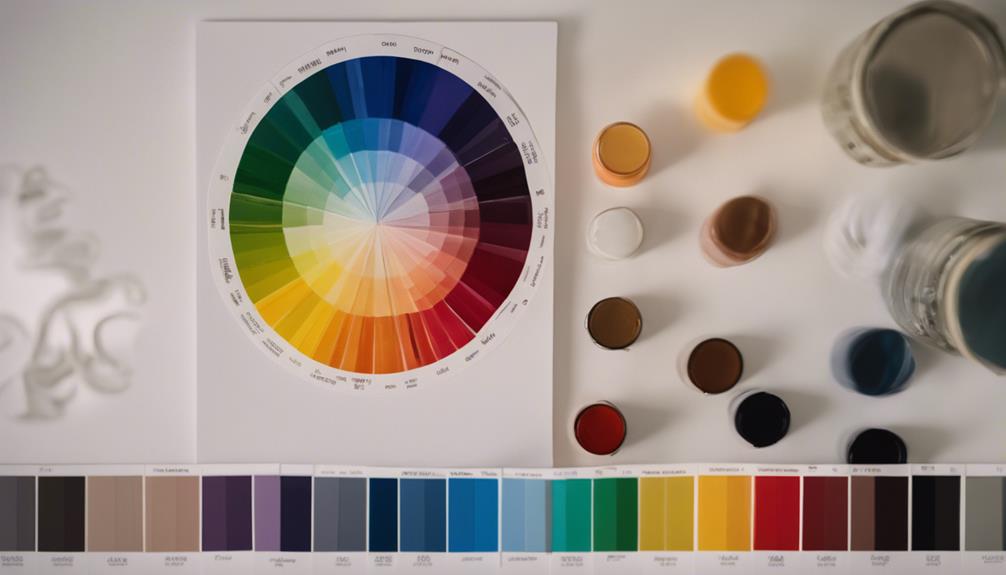
Delving into the essence of color theory fundamentals reveals the intricate science behind creating harmonious color palettes in interior decorating. Color theory encompasses a wide range of principles that help decorators understand how colors interact with each other and impact the overall feel of a space. By grasping color psychology, decorators can intentionally choose hues that evoke specific emotions and moods within a room. This knowledge extends to exploring color wheel concepts, different color schemes, and how varying colors influence spatial perception.
In interior decorating projects, mastering color theory is essential for selecting the right hues, tones, and shades to achieve the desired visual effects. It enables decorators to craft visually appealing and cohesive design schemes that resonate with the intended atmosphere of a room. Understanding color theory empowers decorators to make informed decisions about color combinations, ensuring that each element contributes harmoniously to the overall aesthetic.
Hands-On Room Design Projects
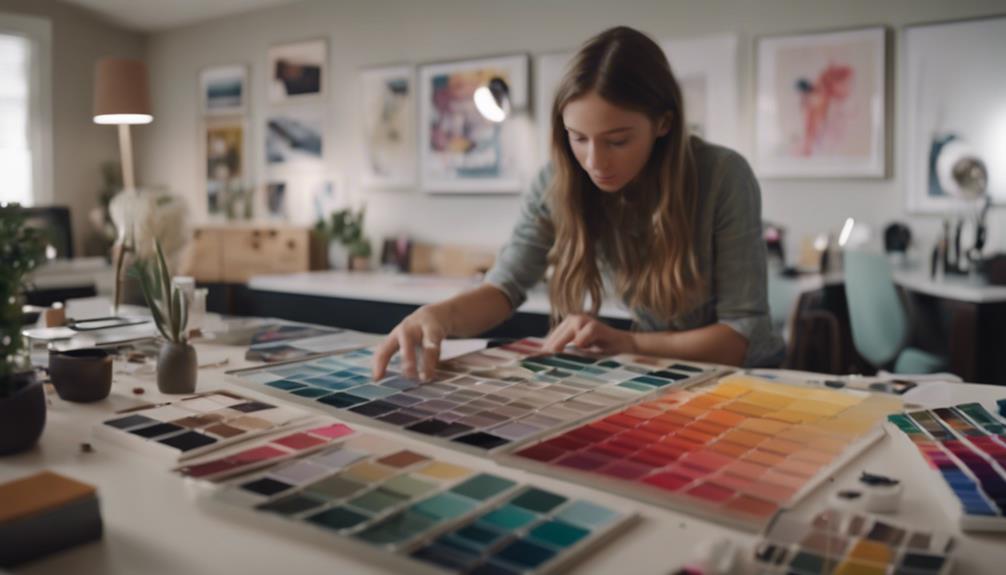
Engaging in hands-on room design projects during interior decorating courses provides students with practical experience to apply theoretical concepts in real-world settings. These projects involve creating floor plans, designing furniture layouts, and implementing various design concepts for different rooms. By participating in these activities, students have the opportunity to enhance their creativity, spatial awareness, and overall design skills. Instructors play a vital role by offering guidance and feedback to help students improve their project outcomes.
Completing room design projects not only enriches students' learning experiences but also equips them with tangible portfolio pieces that can be showcased to potential clients or employers. These projects serve as a demonstration of the students' capabilities and show their proficiency in applying design principles to real-life scenarios. Overall, hands-on room design projects are instrumental in bridging the gap between theoretical knowledge and practical application in the field of interior decorating.
Career Opportunities Explored
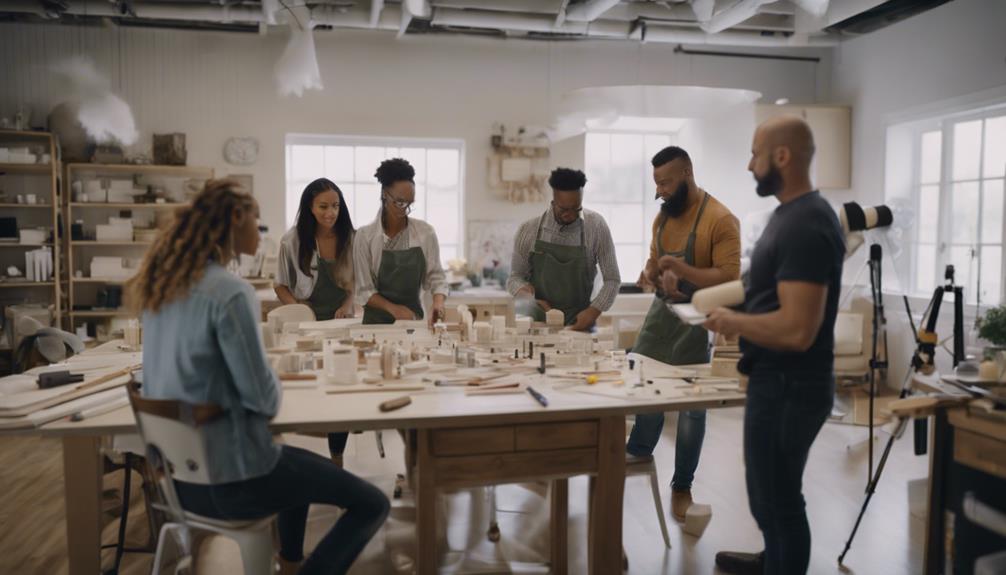
Exploring the vast array of career opportunities available in interior decorating courses reveals a diverse range of roles in residential and commercial design. Graduates can step into positions as interior decorators, design consultants, home stagers, or color consultants. These professionals have the chance to work on designing private homes, offices, retail spaces, hospitality venues, and more.
The demand for interior decorating skills isn't limited by borders, offering a wide range of job prospects globally. Within the interior decorating industry, individuals can find opportunities for creativity, flexibility, and career growth. Whether it's creating cozy living spaces for families or designing trendy office environments, the field of interior decorating presents a host of exciting paths to explore.
As design consultants, graduates can bring their artistic flair to various projects, while home stagers can showcase properties in their best light. Color consultants play an essential role in creating harmonious and appealing spaces, making each career path unique and fulfilling.
Industry Trends Emphasized
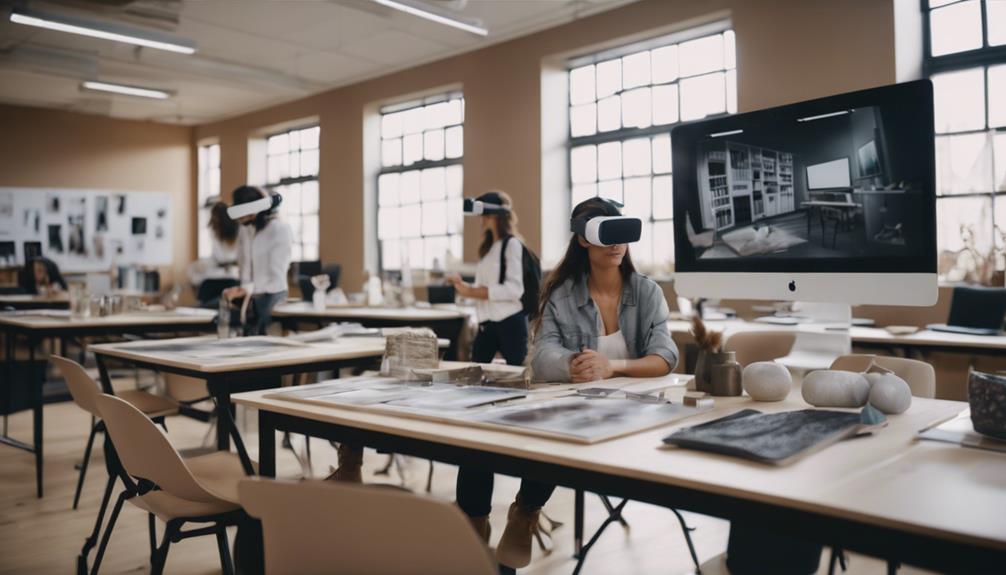
In interior decorating courses, we explore various design techniques to enhance our skills.
We investigate color theory basics to understand how different hues can impact a space.
Additionally, hands-on projects are integrated into the curriculum to apply our knowledge practically.
Design Techniques Overview
What design techniques are currently emphasized in interior decorating courses to stay up-to-date with industry trends?
Interior decorating courses focus on teaching students various design techniques that are relevant in today's interior design industry. These courses cover essential aspects such as color theory, spatial design, and different design styles to make sure students develop a thorough skill set. Understanding color theory is important as it helps students create harmonious color palettes in their designs.
Additionally, spatial design concepts, including architectural drawings, floor plans, elevations, and perspectives, are taught to provide students with a deep understanding of how to effectively utilize space in their designs. By incorporating these key elements into their learning, students are equipped with the knowledge and skills necessary to succeed in the dynamic field of interior design.
Color Theory Basics
Understanding color theory basics is essential in interior decorating courses. Industry trends highlight the significance of color palettes and combinations in creating visually appealing spaces. By grasping color psychology, students can utilize different hues to evoke specific emotions and moods within various rooms.
This knowledge empowers decorators to make informed design decisions when selecting paint, furniture, and decor elements. Mastery of color basics enables interior decorators to craft harmonious and balanced designs that resonate with clients' preferences.
Through exploring the intricacies of color palettes and combinations, students develop a foundational understanding that underpins their ability to create aesthetically pleasing and cohesive interior spaces. Interior decorating courses equip individuals with the skills to apply color theory effectively in their design endeavors.
Hands-On Projects Integration
Exploring the practical application of industry trends through hands-on projects is a cornerstone of interior decorating courses. These projects allow students to investigate real-life scenarios, applying design concepts and honing their skills in spatial arrangements.
By working on industry-relevant projects, students gain insight into current demands and trends within the field of interior decorating. Emphasis is placed on practical applications, where students learn to create cohesive design concepts and execute them effectively.
Through hands-on integration, learners not only enhance their understanding of spatial arrangements, color theory, and furniture layouts but also prepare themselves for the challenges of the industry. This immersive approach to learning ensures that students are well-prepared to tackle the complexities of interior decorating with confidence and skill.
Residential Vs. Commercial Design Focus
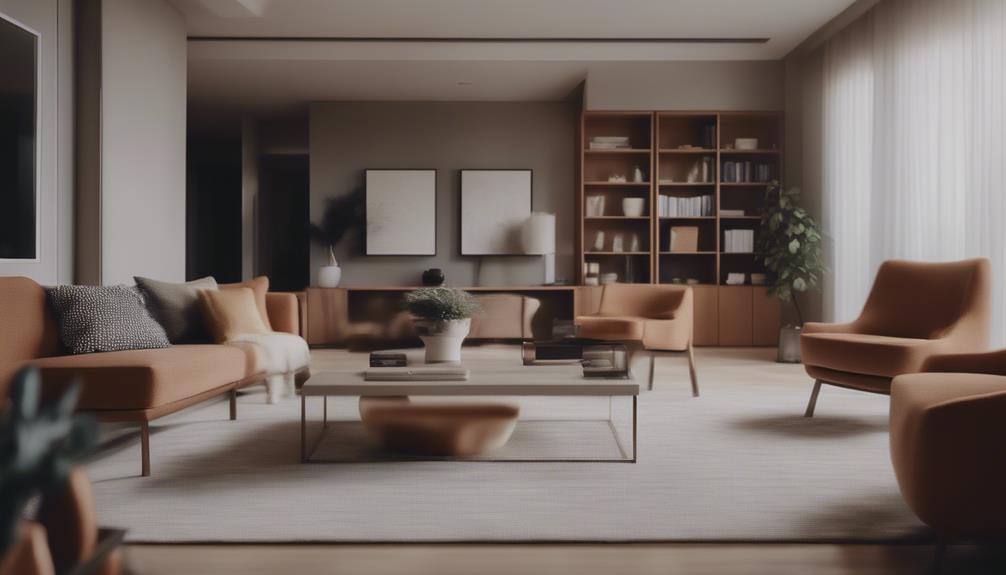
Comparatively, residential interior design primarily focuses on creating functional and aesthetically pleasing living spaces in homes. Residential designers pay close attention to the personal style, comfort, and lifestyle of the homeowners they're working with.
On the other hand, commercial interior design revolves around designing spaces for businesses, offices, retail stores, and public areas. Commercial designers prioritize functionality, branding, efficiency, and creating an inviting environment for customers. While residential designers aim to enhance the living experience of individual homeowners, commercial designers collaborate with business owners and stakeholders to meet specific business objectives.
In residential design, the main goal is to create a cozy and personalized environment that reflects the preferences and needs of the residents. In contrast, commercial design focuses on optimizing the space for productivity, customer engagement, and brand representation. Understanding these distinctions is important for aspiring interior decorators to tailor their skills and knowledge to meet the unique requirements of either residential or commercial projects.
No Prerequisites Required

Interior decorating courses welcome individuals of all backgrounds by not imposing any prerequisites for enrollment. These courses are designed to introduce students to various aspects of interior design, including design styles, color theory, spatial arrangements, floor plans, elements of design, and architectural drawings.
By not requiring prior experience in the field, these courses provide a valuable opportunity for beginners to learn the fundamentals of interior decorating without feeling intimidated or overwhelmed. Students can expect to gain knowledge about different design elements, drawing tools, and how to create cohesive color schemes to enhance interior spaces.
Throughout the course, participants will explore architectural drawings, floor plans, elevations, and perspectives to develop a thorough understanding of space planning and design principles. Whether you're interested in pursuing interior decorating for personal enjoyment or considering a career in the field, these courses offer a solid foundation to build upon.
The accessibility of these courses without prerequisites ensures that anyone with an interest in interior design can explore and expand their skills in this creative field.
Benefits for Personal or Professional Development
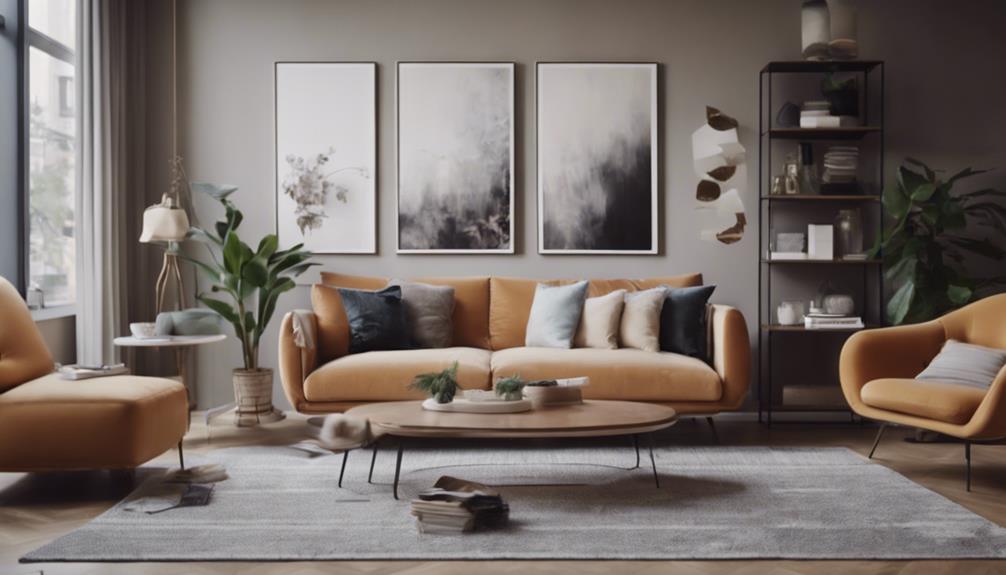
Moving from the focus on enrollment accessibility, we now highlight the advantages that interior decorating courses offer for personal or professional development. These courses provide extensive training in elements and principles of decorating, design materials, lighting, window treatments, and accessories. Through digital and physical textbooks, instructional videos, and specialized room design considerations, students gain valuable skills.
Upon completion, individuals receive an IDDP certificate, showcasing their professional training and ability to create aesthetically pleasing spaces. Interior decorating courses pave the way for a successful career in interior decorating, offering payment flexibility with options to pay in full or through installment plans.
Whether pursuing these courses for personal interest or professional growth, they empower learners to design practical and beautiful homes, equipping them with the expertise needed to excel in the field.
Frequently Asked Questions
What Is Interior Decorating Program?
Interior decorating program equips individuals with skills in design, lighting, room layout, and styles.
It teaches floor plan drawing, furniture arrangements, and historical to modern design trends.
Completing the program earns an IDDP certificate, showcasing professional training and design abilities.
This certification opens doors to a fulfilling career in interior decorating, offering avenues for creativity and advancement.
Is Interior Decoration a Course?
Interior decoration is indeed a course that covers various aspects of design and decorating. It includes learning about elements like lighting, materials, and room considerations.
Anyone interested in interior design can benefit from taking such a course to enhance their skills and knowledge. These courses are accessible to all, regardless of their educational background, and offer a more affordable alternative to traditional university programs.
Which Course Is Best for Interior Decorator?
When deciding which course is best for an interior decorator, consider your specific interests and career goals.
Home staging can enhance your ability to showcase properties for sale, while professional organizing focuses on decluttering and maximizing space efficiency.
Feng Shui design emphasizes creating harmonious environments, and color consultant courses explore the psychology of color choices.
Select the course that aligns best with your aspirations and skill development needs.
What It Takes to Be an Interior Decorator?
To be an interior decorator, we need a keen eye for design, creativity, strong communication skills, and budget management abilities.
Working closely with clients to bring their vision to life, we select color schemes, furniture, decor, and accessories that reflect their style.
Creating functional and visually appealing living spaces is key in residential projects. Interior decorators enhance aesthetics and visual appeal, transforming interior spaces with our expertise.
Conclusion
To sum up, interior decorating courses offer a valuable opportunity to learn design principles, color theory, and industry trends in a hands-on setting. Whether for personal interest or professional development, these courses provide a thorough curriculum without any prerequisites required.
By focusing on both residential and commercial design, students can gain a well-rounded understanding of the field. Consider enrolling in an interior decorating course to enhance your design skills and stay up-to-date with the latest trends in the industry.
